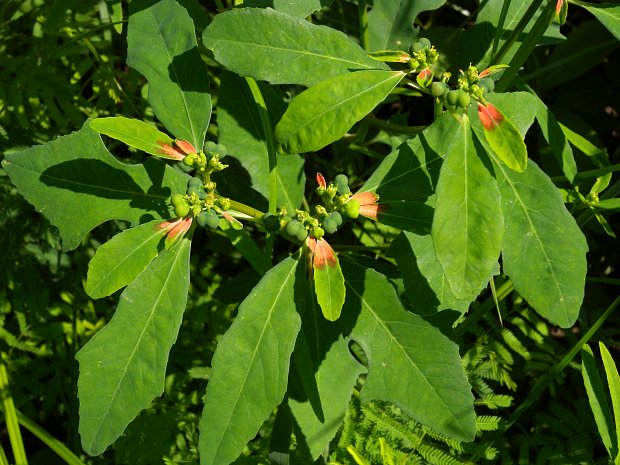
The narrow petioles are up to ½" long, light green, and either glabrous or slightly hairy. The foliage of this plant contains an irritating white latex. The upper stems terminate in flat-topped clusters of cyathia (cup-like structures containing several flowers); a single cluster of cyathia can span up to 1½" in diameter. Each cyathium is about 2 mm. across, light green to reddish green, and glabrous; each cyathium contains several male (staminate) flowers and a single female (pistillate) flower. The male flowers are barely exerted from the cyathium, while the female flower is pedicellate. Each male flower consists of a single stamen; its anthers are usually yellow. The female flower consists of a 3-lobed ovary with 3 divided styles (appearing to be 6 styles). Adjacent to each cyathium, there is an open nectary gland. This nectar gland is about 1.5 mm. long, 0.5 mm. across; its upper rim is curved-oblong in shape, while the upper surface of its interior is depressed. The peduncles and branches of cyathia clusters are short, light green to medium green, and glabrous.
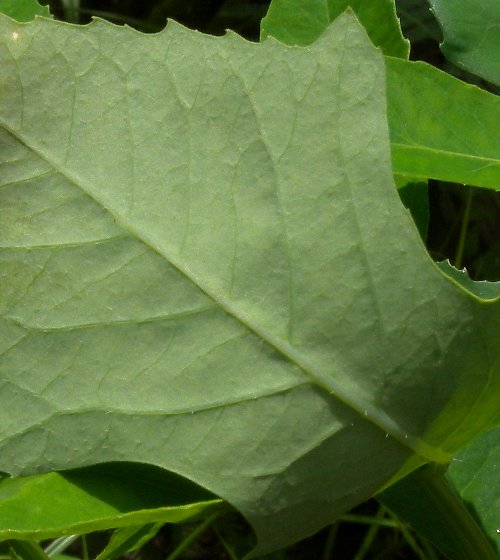
Subtending each cluster of cyathia, there are several spreading bracts that resemble the leaves. The size of these bracts is variable, but some of them are smaller than the leaves. Usually, the bases or lower halves of these bracts are bright red to a greater or lesser degree, although sometimes they remain green. The blooming period occurs during the summer and autumn, lasting 1-3 months. During this time, several flat-headed tiers of clustered cyathia and their bracts may develop. Afterwards, the ovaries develop into 3-celled seed capsules that are light green to reddish green and glabrous. At maturity, these seed capsules are about 5 mm. across and 4 mm. long; they are 3-lobed and subgloboid in shape. At this time, the pedicels of these capsules are up to 2 mm. long and strongly curved. Each cell of a seed capsule contains a single seed. Eventually, the seeds are flung from their capsules by mechanical ejection. Individual seeds are about 2.5 mm. long, 2 mm. across, and globoid-ovoid in shape; their outer surfaces are dark brown or black and warty. The root system consists of a taproot with lateral fibrous roots.
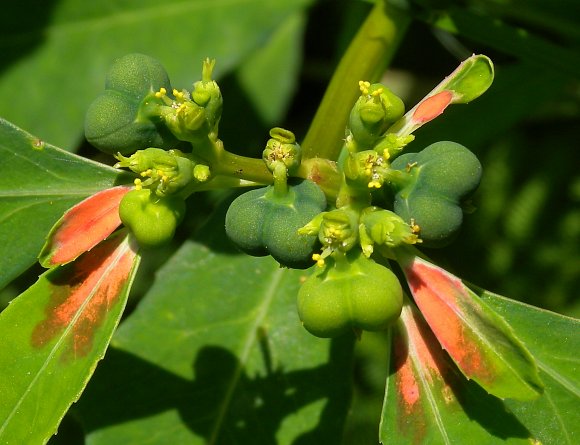
Cultivation: The preference is full or partial sun, moist to dry-mesic conditions, and a rather infertile soil containing sand, gravel, or rocky material. However, this plant can adapt to more fertile soil containing loam or clay-loam if competition from other ground vegetation is reduced. The seeds germinate during late spring and young plants develop rapidly. The size of individual plants is variable, depending on moisture conditions and fertility of the soil.
Range & Habitat: The native Wild Poinsettia is widely scattered across Illinois, where it is uncommon to occasional (see Distribution Map). Illinois lies near its northern range-limit. Habitats include sand prairies, rocky glades, open or rocky woodlands, gravel bars along streams, fields, eroding banks, roadsides, areas along railroads, and waste areas. These habitats include sandy fields and sandy areas along roads and railroads. Wild Poinsettia prefers habitats with a history of disturbance.
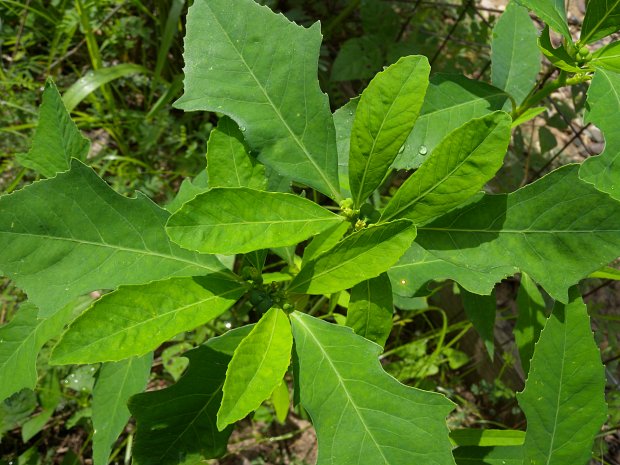
Faunal Associations: The nectar and pollen of the flowers attract small bees, flies, and possibly other insects. Such floral visitors appear to be few in number. A flea beetle, Glyptina cyanipennis, and the caterpillars of a moth, Sprague's Pygarctia (Pygarctia spraguei), feed on Wild Poinsettia (Clark et al., 2004; Covell, 1984/2005). Other insects that feed on Euphorbia spp. include two aphids, Aphis pulchella and Macrosiphum euphorbiae (Hottes & Frison, 1931; Cranshaw, 2004). The latter aphid is highly polyphagous. The foliage of this plant is usually avoided by mammalian herbivores because of the toxic milky latex. It can irritate the lining of their mouth parts and digestive tracts. The seeds may be eaten by some upland gamebirds and granivorous songbirds, but information about this is scant.
Photographic Location: The wildflower garden of the webmaster in Urbana, Illinois.
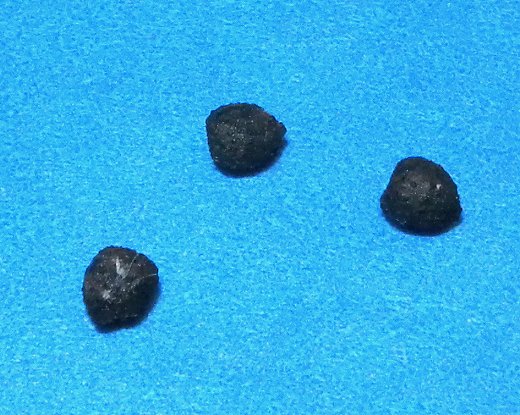
Comments: The most unusual thing about this plant are the striking red bracts that subtend its clusters of flowers. In this regard, it resembles the well-known Christmas Poinsettia (Euphorbia pulcherrima), although the latter tends to be even more showy. The Christmas Poinsettia is a much taller plant when it is full-grown (10' tall or more); it is from Mexico and not winter-hardy. The Christmas Poinsettia can be cultivated successfully outdoors in southern Florida, but it is very susceptible to frost. Wild Poinsettia (Euphorbia cyathophora) is often confused with a closely related species, Milkweed Spurge (Euphorbia heterophylla). This latter species has leaves that are usually unlobed and often toothless, and its leafy bracts are rarely, if ever, red. Another important difference is the shape of their nectar glands: Milkweed Spurge has nectar glands that are circular in shape, while the nectar glands of Wild Poinsettia are curved-oblong in shape (resembling the outline of a miniature hot dog). Milkweed Spurge occurs throughout the southern United States, but it has not been found in Illinois thus far.
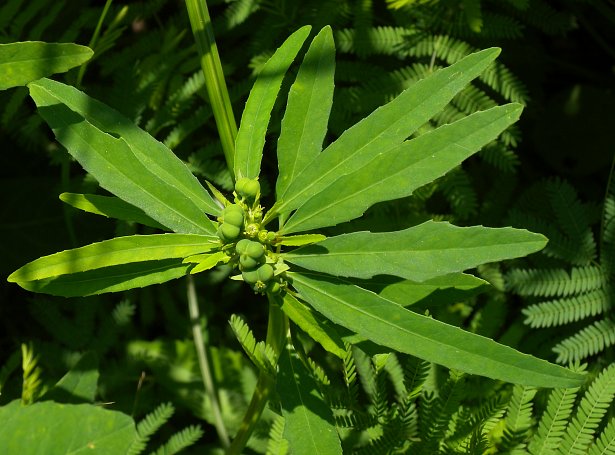
Another species, Toothed Spurge (Euphorbia dentata), also resembles Wild Poinsettia. Toothed Spurge differs by having toothed leaves that lack lobes and its stems are usually pubescent or hairy. Furthermore, the leafy bracts of this latter spurge are never red, and its anthers are usually whitish, rather than yellow. The seeds of Toothed Spurge are light brown to brown and irregularly bumpy, while those of Wild Poinsettia are dark brown to black and more finely warty. Because these species are sometimes assigned to the Poinsettia genus, Wild Poinsettia is sometimes referred to as Poinsettia cyathophora. In addition to the United States, Wild Poinsettia, Milkweed Spurge, and Toothed Spurge are widely distributed in South and Central America. The habitat preferences of these species are similar, although Wild Poinsettia appears to prefer conditions that are more moist. These three species are often regarded as field weeds. Other common names of Euphorbia cyathophora are Painted Spurge and Fire-on-the-Mountain.